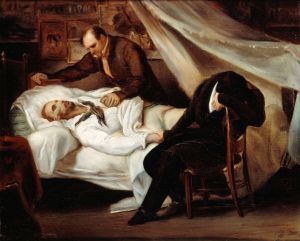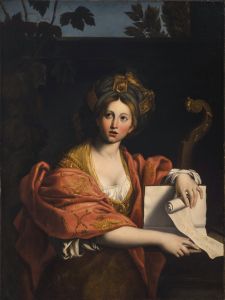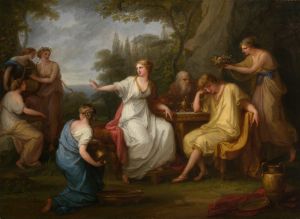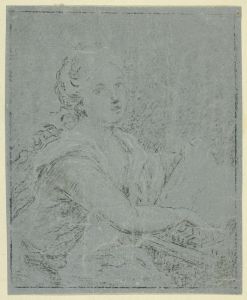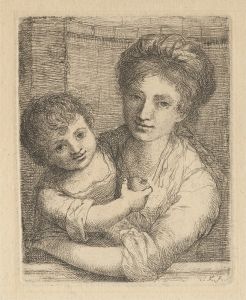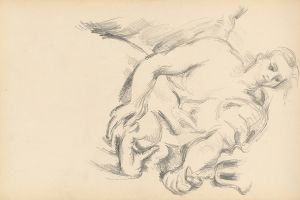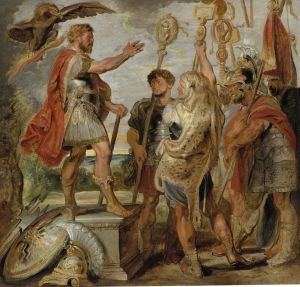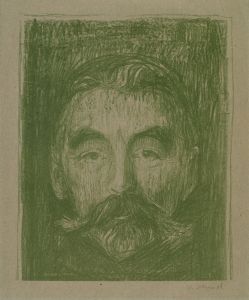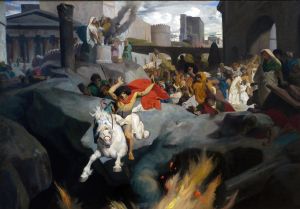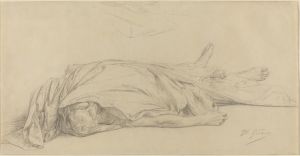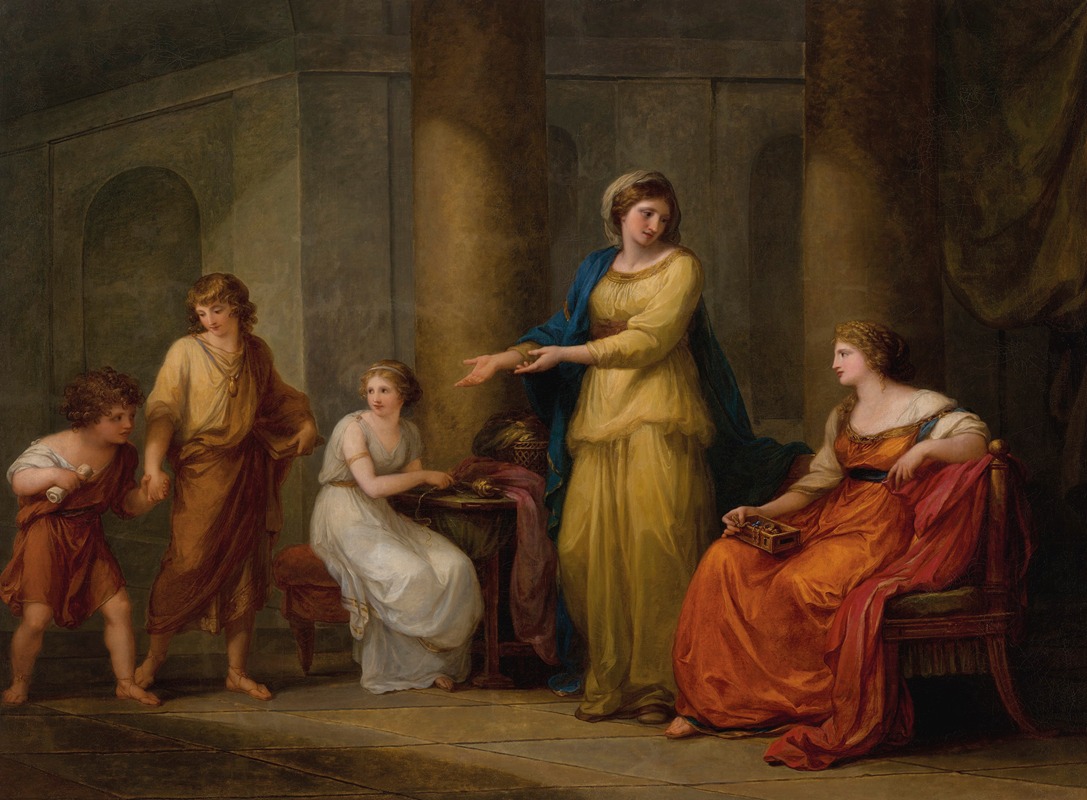
Cornelia, Mother of the Gracchi
A hand-painted replica of Angelica Kauffmann’s masterpiece Cornelia, Mother of the Gracchi, meticulously crafted by professional artists to capture the true essence of the original. Each piece is created with museum-quality canvas and rare mineral pigments, carefully painted by experienced artists with delicate brushstrokes and rich, layered colors to perfectly recreate the texture of the original artwork. Unlike machine-printed reproductions, this hand-painted version brings the painting to life, infused with the artist’s emotions and skill in every stroke. Whether for personal collection or home decoration, it instantly elevates the artistic atmosphere of any space.
"Cornelia, Mother of the Gracchi" is a renowned painting by the Swiss-born artist Angelica Kauffmann, completed in 1785. Kauffmann was a prominent figure in the Neoclassical movement, and her works often depicted historical and mythological subjects with an emphasis on virtue and moral themes. This painting is a quintessential example of her style and thematic focus.
The painting portrays Cornelia Africana, the mother of the famous Roman reformers Tiberius and Gaius Gracchus, known collectively as the Gracchi brothers. Cornelia is celebrated in history for her virtue and dedication to her children, and she is often cited as an exemplar of Roman maternal ideals. The story behind the painting is based on a popular anecdote that highlights Cornelia's values and priorities.
In the painting, Cornelia is shown with her children, and she is approached by a wealthy Roman woman who displays her jewelry and asks to see Cornelia's treasures. In response, Cornelia gestures to her sons, indicating that they are her true treasures. This narrative underscores the theme of maternal pride and the value of family over material wealth, aligning with the Neoclassical ideals of virtue and moral integrity.
Kauffmann's depiction of Cornelia is characterized by its clarity and elegance, typical of Neoclassical art. The composition is balanced and harmonious, with a focus on the figures and their expressions. Cornelia is portrayed with a serene and dignified demeanor, emphasizing her role as a virtuous mother. The use of soft colors and gentle lighting enhances the painting's serene and noble atmosphere.
Angelica Kauffmann was one of the few successful female artists of her time, and her work was highly regarded by her contemporaries. She was a founding member of the Royal Academy of Arts in London, one of only two female founding members. Her success in a male-dominated field was a testament to her talent and determination.
"Cornelia, Mother of the Gracchi" is housed in the Virginia Museum of Fine Arts in Richmond, Virginia. The painting remains an important work in the study of Neoclassical art and continues to be appreciated for its artistic merit and the timeless message it conveys about the importance of virtue and family.
Kauffmann's ability to convey complex moral themes through her art has ensured her place in art history, and "Cornelia, Mother of the Gracchi" is a prime example of her skill in combining narrative and aesthetic elements to create a compelling and meaningful work. The painting not only reflects the values of its time but also resonates with contemporary audiences, making it a lasting piece of cultural heritage.





